As it stands, our live application feature is not being widely used by schools and only provides hiring staff with a fairly limited set of features to assist with their recruitment process. For this next round of research on the application journey, our aim was to be more ambitious with our prototype and think bigger for future development in an attempt to better support that complete end to end process.
# Goals for the study
We aimed to usability test multiple new features on the hiring staff tracking system to verify that it meets their needs. New features included:
- downloading and sharing applications
- inviting an applicant to interview
- making decisions on an application
- contacting an applicant through the service
- making notes on an application
We also aimed to build a better understanding of the end to end recruitment process across Local Authority (LA) maintained schools, Multi Academy Trusts (MATs) and Single Academy Trusts (SATs) and better understand who would be responsible for implementing something like Teaching Vacancies (TV) into that process.
# What we tested
12 remote 1 hour sessions were carried out using Lookback.
This was an exploratory usability test. We wanted to give hiring staff free rein of the prototype to see how they would use TV upon receiving applications through the service.
We followed a discussion guide to ensure any questions asked were consistent.
# User needs
As a hiring staff user
I need:
- to manage my applications in an efficient way so that I can reduce the time I spend on the recruitment process.
- to share the applications I receive with the shortlisting panel so that they can start the shortlisting process.
- to inform the shortlisted candidates of the interview details so that they know when they have to come in and what is expected of them.
- to notify unsuccessful candidates that they haven’t been appointed so that they know they didn’t get the position.
- to notify the successful candidate they have been appointed so that they can decide if they want to accept the offer.
# Who we tested with
We spoke with 12 hiring staff within in-scope, state funded schools and trusts in England. Amongst the 12 participants there were:
- 6 primary schools
- 6 secondary schools
- a mixture of MATs / SATs & LA maintained schools
9 out of the 12 participants were first time users of TV. All were first time users of the TV applicant tracking system (ATS).
# Our Assumptions
Our aim was to validate the following assumptions.
Downloading and sharing applications
- We believe some hiring staff can be selective over the applications they share with the panel.
- We believe hiring staff would rather pass the applications they receive straight on to the panel than have to download them first.
- We believe members of the shortlisting panel are more likely to check applications via email than log in to a system like Teaching Vacancies to view them.
Scheduling interviews
- We believe hiring staff sometimes need to make changes to or cancel interviews that have been scheduled.
- We believe having one place to set up interviews and correspond with candidates about their interview will help streamline the interview scheduling process.
Communicating decisions with an applicant
- We believe hiring staff need to indicate if an application has been looked at in order to prevent duplication of tasks.
- We believe not all hiring staff want to provide applicants with details as to why they have not been successful.
Communicating decisions with an applicant
- We believe hiring staff communicate with applicants when they need to:
- clarify information provided on the application
- collect references
- complete the required DBS checks
- arrange an interview
- clarify the interview information and details
- offer a role after an interview
- We believe hiring staff need to keep a record of any communication they make with applicants.
Making notes on an application
- We believe hiring staff use note taking as a form of communication amongst those involved in the recruitment process.
# 10 Key takeaways
- As a whole, we received positive feedback from hiring staff. They were familiar with the features we were offering and were able to interact with them in a way that demonstrated their usability.
Hiring staff commented that TV was ‘useful’, ‘quicker than their current processes’ and ‘would make their lives easier’. Although there is currently a low take up of the application feature, it is clear that what we are offering adds value and is beneficial to hiring staff.
The low take up of our application feature may be influenced by a number of other barriers that may be preventing schools from being able to use it. These include:
- ties with the trust / LA.
- ties with the school’s application form.
- decisions to move away from adopted systems falling on the headteacher.
- a lack of awareness of TV and the application offering.
- the time and management constraints of adding a new system on top of what they already have.
- jobseeker awareness and the risk of losing quality candidates.
“I think TV would be great for our school, it’s easy…it’s sufficient” “it’s quicker than having paper”
- It is not uncommon for schools to buy into an LA’s personnel team. This means they often become tied to the application form and rules set out by the LA. Similarly, schools that are part of a trust must also comply with the guidelines set out by the trust. This means schools are often tied to mandated application forms and recruitment methods.
In addition to this, schools are reluctant to move away from their own application forms and believe the questions on their form to be important.
This is reflected in the number of schools currently using the application feature. Out of 6560 vacancies that expired between 17 October to 17 November on Teaching Vacancies, only 4.63% offered the TV application form.
As we encounter more and more schools with mandated application forms, we need to consider how to overcome this barrier.
In November 2020 a research study was conducted to understand what schools needed from an application form. In that study, we found, if a form were to be provided for schools to use, it was most important that schools were able to customise it to meet their needs.
If competitors like TES are offering online applications that are customisable, should we be doing the same?
“Anyone who worked in the LA used the same form - but now you can put your own logo on it, provided you meet some of their criteria because we buy into their personnel team.”
“The MAT want all the job applications to be the same.”
- Hiring staff like the idea of using something cheaper over their paid subscriptions but in reality only have a vague idea of their recruitment costs.
As they adopt their systems from previous staff members, there is no real incentive to move away from what seems to work for them even if it is costly. For hiring staff, the priority is to receive quality candidates and act quickly to avoid losing them.
Trying an alternative method comes with a risk and they can’t afford to lose candidates in the process.
“We have a budget - I’ve got no idea how much is in it […] there’s always enough for a TES subscription."
"I don’t know what the costs involved are, I’ve never asked.”
- The headteacher is most likely to be the one to make decisions on where they advertise, whether they use an applicant tracking system (ATS) or what ATS they use.
We know headteachers and the senior leadership team (SLT) are busy and not always willing to log in to systems like TV. We therefore need to find a way of getting them to understand what is on offer even if they are not the ones that are going to be using it.
How might we expose the service to headteachers and encourage them to make TV a central part of their recruitment strategy?
- We tested a feature where hiring staff could set up interviews through the service:
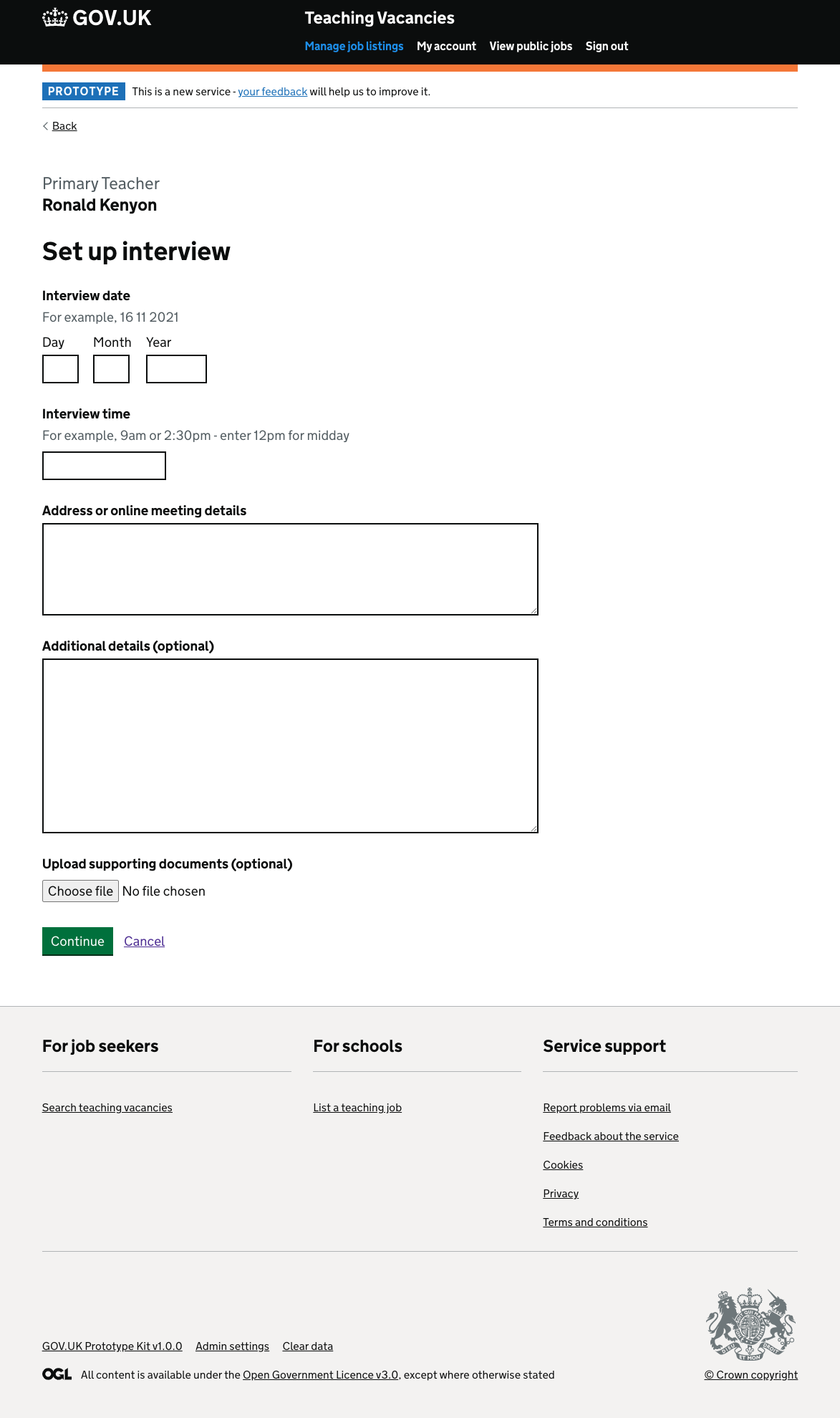
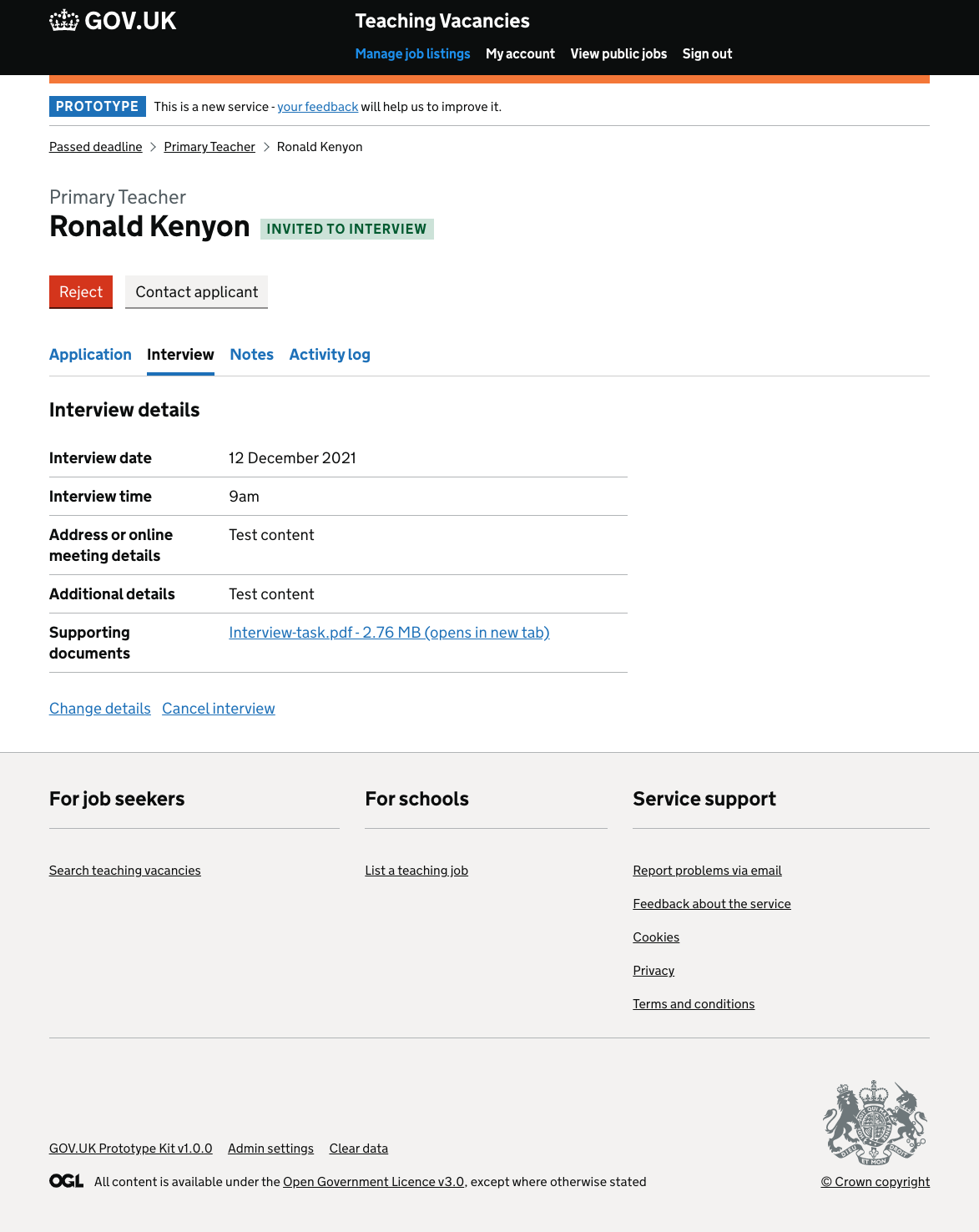
We also tested a feature where hiring staff were able to send applicants a message through the service.

We found speed of response was very important if any contact needed to be made. Phone calls are made to get quick answers about a candidate’s application or interview attendance. Features like ‘invite to interview’ and ‘contact’ are most likely to be used in conjunction with this method as a confirmation once an initial call has been made. If hiring staff were to place their trust in TV and use features like this, they would need reassurance that their message had been received and that the candidate could effectively respond. It was that reassurance they lacked.
“If we know that someone’s good, we are thinking, are they interviewing elsewhere? And how quickly do we need to get them in before another school hires them.”
“So that tells me we have invited her to an interview, it doesn’t tell me if she has accepted or if she is not going to attend, has she sent me a message back?”
- We tested a feature where hiring staff were able to either download all of the applications at once or share the applications directly to an email address.
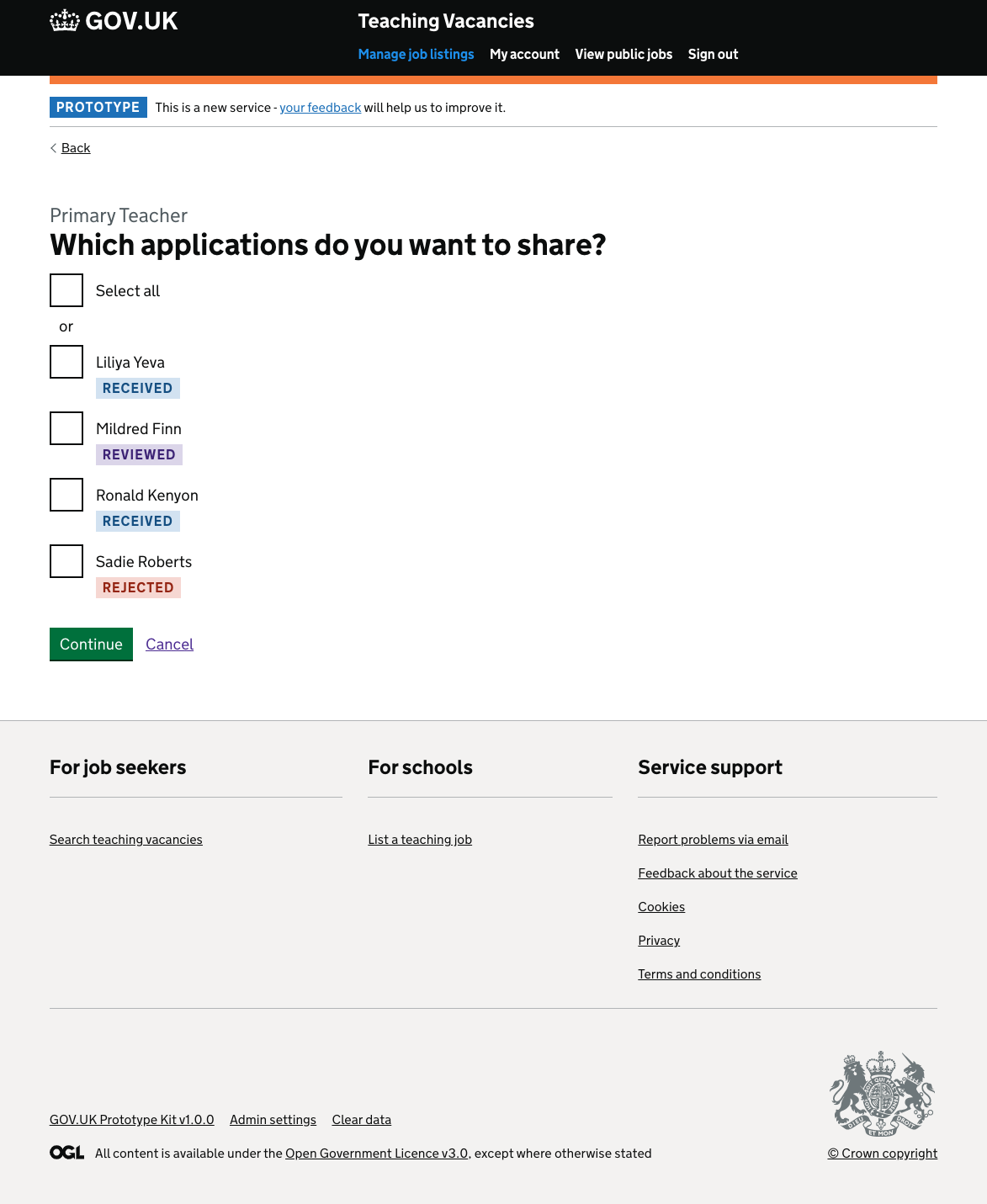
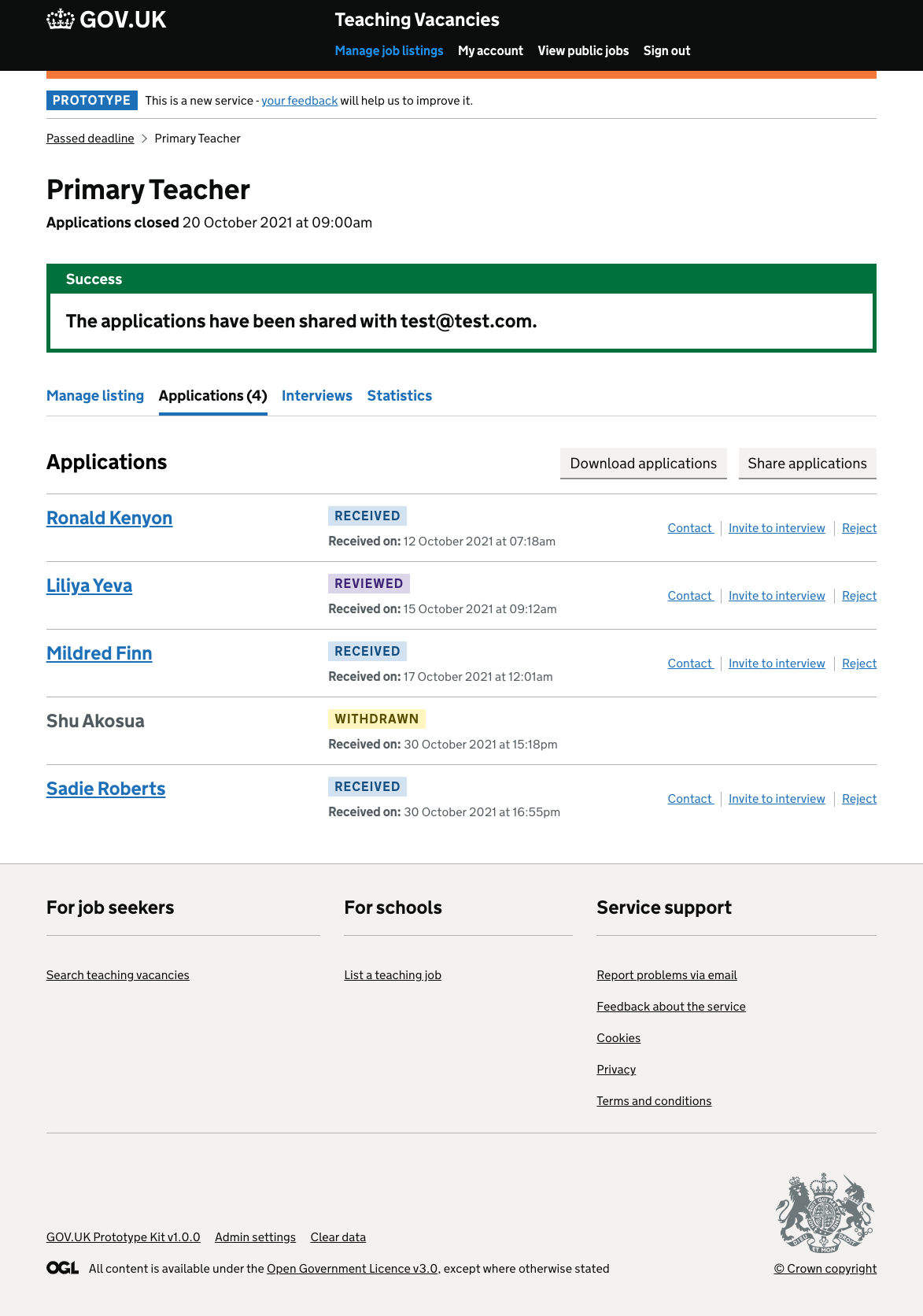
We found that the role of administrative staff is purely to pass all of the applications on to the panel. More senior hiring staff (HR managers of business managers for example) may download and review the applications before passing them on. Having the option to both download or share all of the applications simplified this process.
This also highlighted the varying levels of responsibility amongst hiring staff and potential need for more tailored user experiences.
- Schools are heavily reliant on having hard copies of applications to assist them with the shortlisting process. This is mainly for speed, as applications are compared side by side and notes are made directly onto the paper applications. Hard copies are stored in files, which they seem reluctant to discard.
We found our current download does not fully support the needs of the SLT as it’s format is not optimal for comparing and quickly reviewing a candidate’s information.
- We tested a feature where hiring staff were able to make notes within an application. These notes would be seen by other members of the recruitment team.
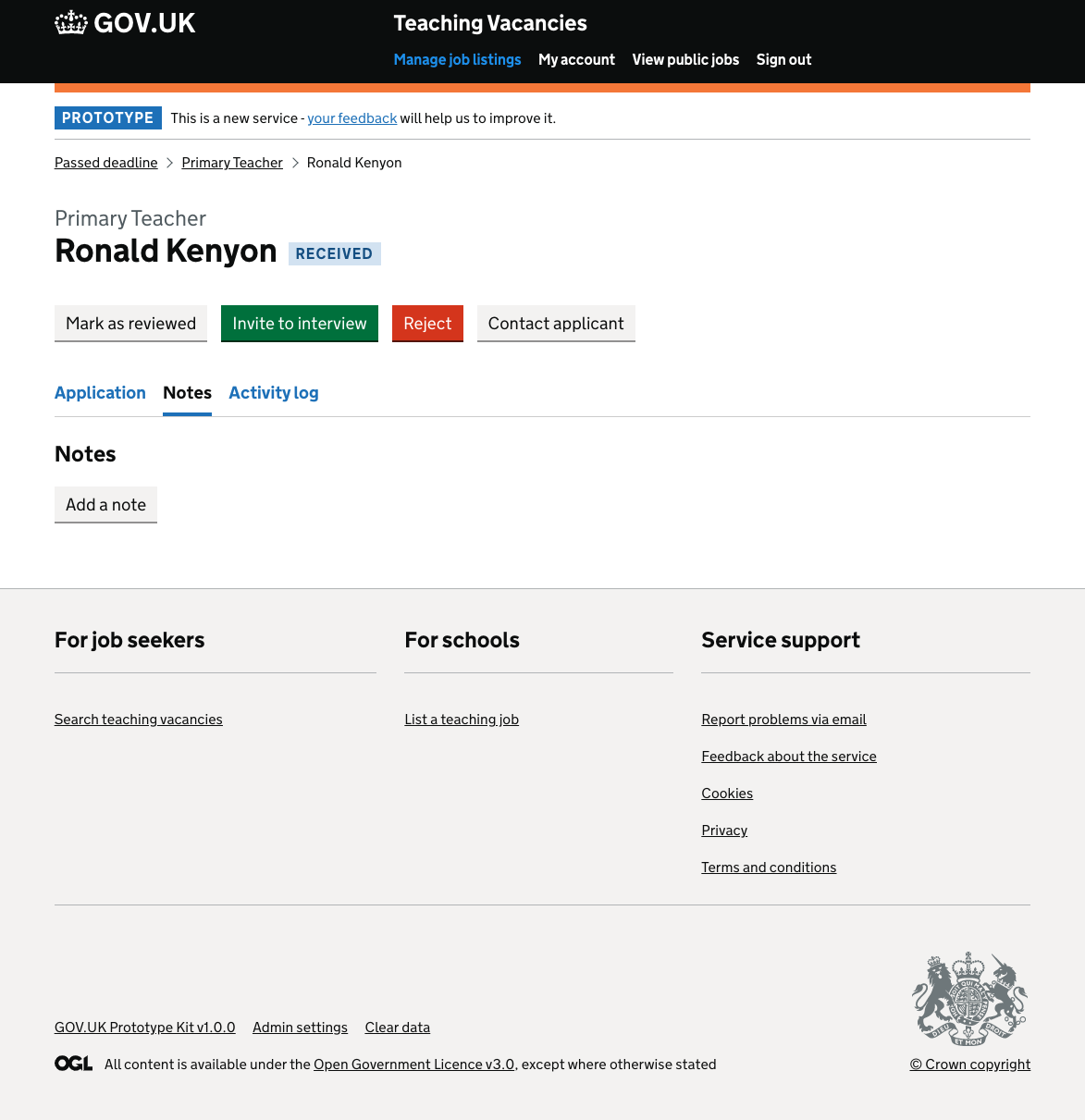
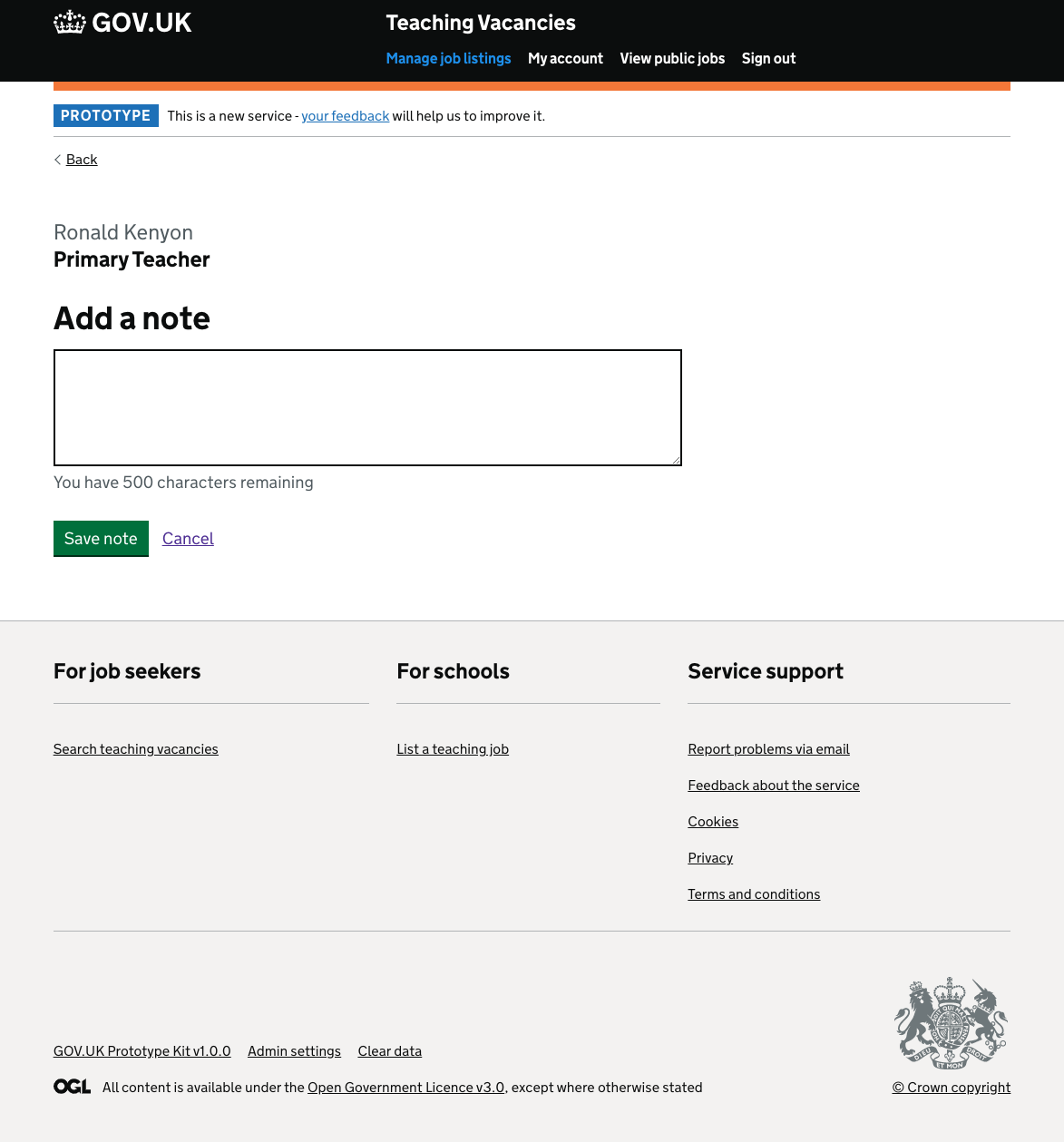
We found notes are made by both hiring staff and the SLT both before and after shortlisting has taken place. Sticky notes, handwritten notes and highlighted text communicate red flags such as issues around references, right to work in the UK, whether that candidate had appeared rude during any contact that had been made or to mark areas of the application that seemed incomplete.
Hiring staff add these notes directly onto the applications before they share them with the panel. We found it is unlikely the panel would see the notes made on TV (pre-shortlisting) unless they were actually part of the download.
- We tested a feature that enabled hiring staff to communicate with an applicant if their application had been unsuccessful.
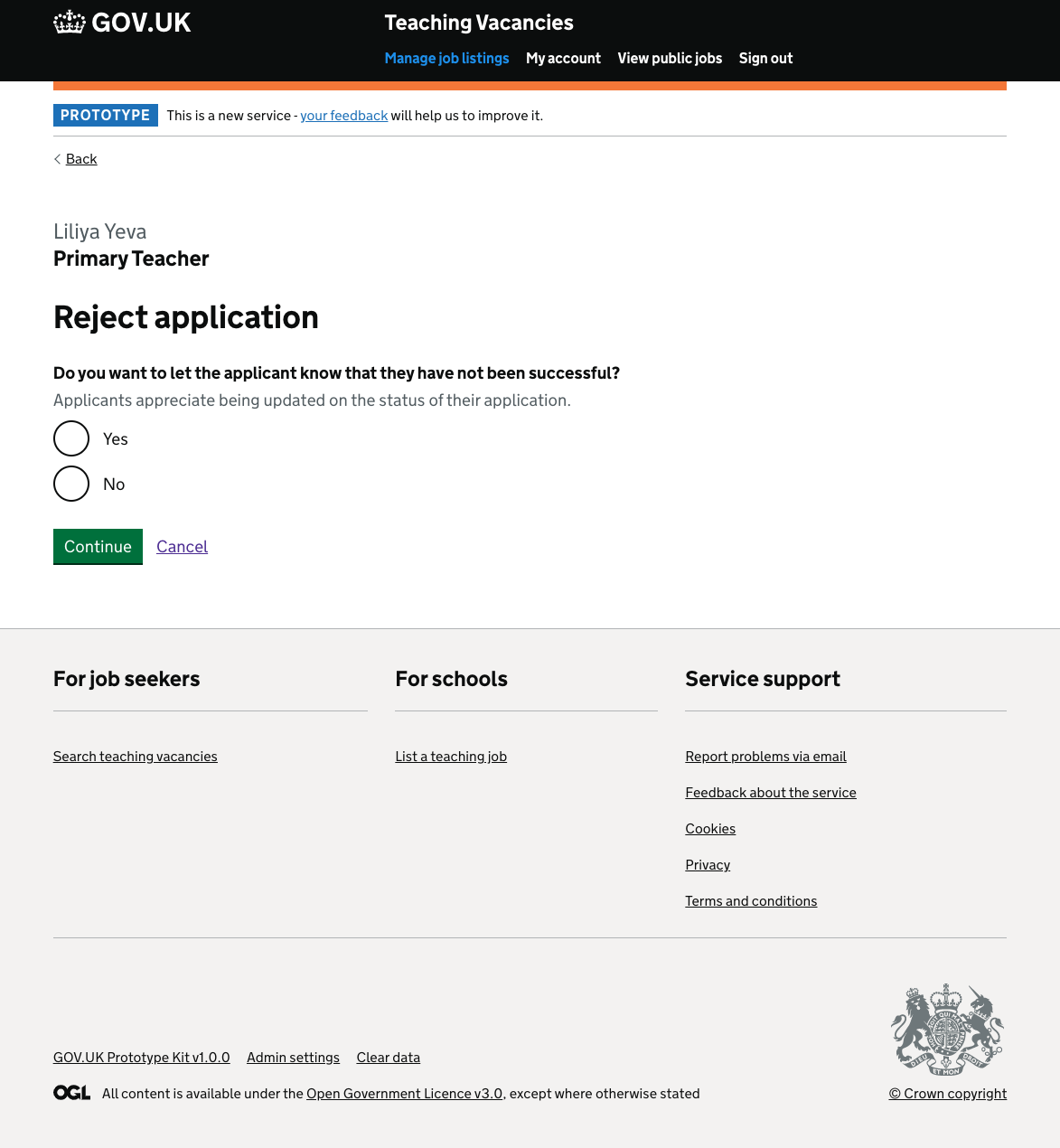

We found hiring staff don’t like the term reject, they feel hesitant to use it as it seems both ‘harsh’ and too 'final.’
Because of this, 3 hiring staff reached for the contact link instead of the reject button to let someone know they haven’t been successful.
Quality candidates are hard to find so schools don’t like to just ‘discard’ them.
"I don’t know if I’d click on ‘reject’ because it sounds so harsh.”
- How decisions are communicated depends on whether the candidate has been shortlisted or not.
Often, no contact is made at all for those that have not been invited to interview. Schools often indicate on the application form, or via an automated email upon receipt of the application that if they do not hear back, to assume they have not been successful.
For those that have been interviewed HS take a much more personal approach and any decisions made will be communicated over the phone.
“I don’t feel this is very personal.”
“We’d always call them and have that conversation.”
This correlates with our quantitative data that suggests hiring staff are not using the ‘reject’ feature. Over the last month (17 September to 17 November 2021) out of those 453 applications submitted, 67 received a response.
# Next steps
Imminently
We should consider putting the download/share, notes and contact features into production, following some design thinking around:
- how might we integrate notes into the download?
- how might we improve the format of the download that the panel will receive?
- how might we inform hiring staff how their messages are received and reassure them that their messages have been sent?
We found there is a definite demand from hiring staff for help with collecting references. Designs for a reference form that will be automatically sent to referees upon shortlisting are underway and is ready to be tested with hiring staff.
Next
It seems there is a lot we still don’t know about the Invite to interview step and how that might function.
- How might we reassure hiring staff that their invite has been sent?
- How might we inform hiring staff what to expect once they have sent an invitation?
- How might we ensure candidates can confirm their attendance?
As LAs have a big part to play in deciding what application form schools use, it is vital we conduct some research with LAs to understand what we can do to incentivise them to mandate the Teaching Vacancies form instead of their own.
- How might we work with LAs to design a form that works in alignment with their requirements?
- What is the role of LAs in schools recruitment systems, how might they be incentivised to mandate the TV application form?
This piece of research will involve taking a look at our competitors and seeing how they have offered the ability to customise an application form so that it meets the requirements of the rules set out by the LA, trust or school.
Looking ahead
As the decision makers within schools, we need to dedicate some time to understand the recruitment needs of headteachers.
- How might we expose the service to headteachers and encourage them to make TV a central part of their recruitment strategy?"
Some design thinking and research is required around talent pools and what our competitors are offering to help hiring staff reach quality candidates.
- How might we help hiring staff hire applicants that might be more suited to other opportunities within the school?
- How might we help hiring staff target their ads to the desired audience and reach quality candidates?